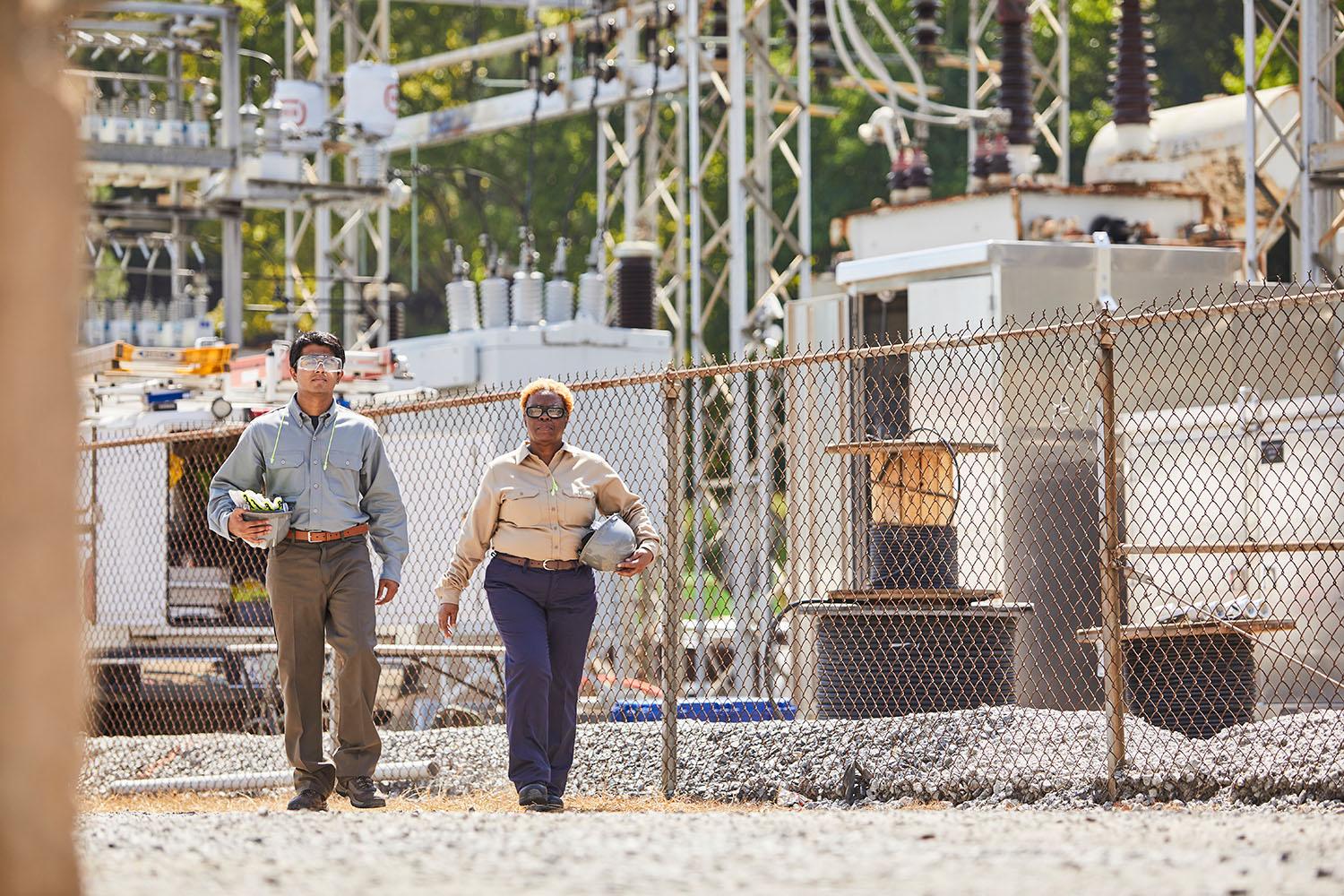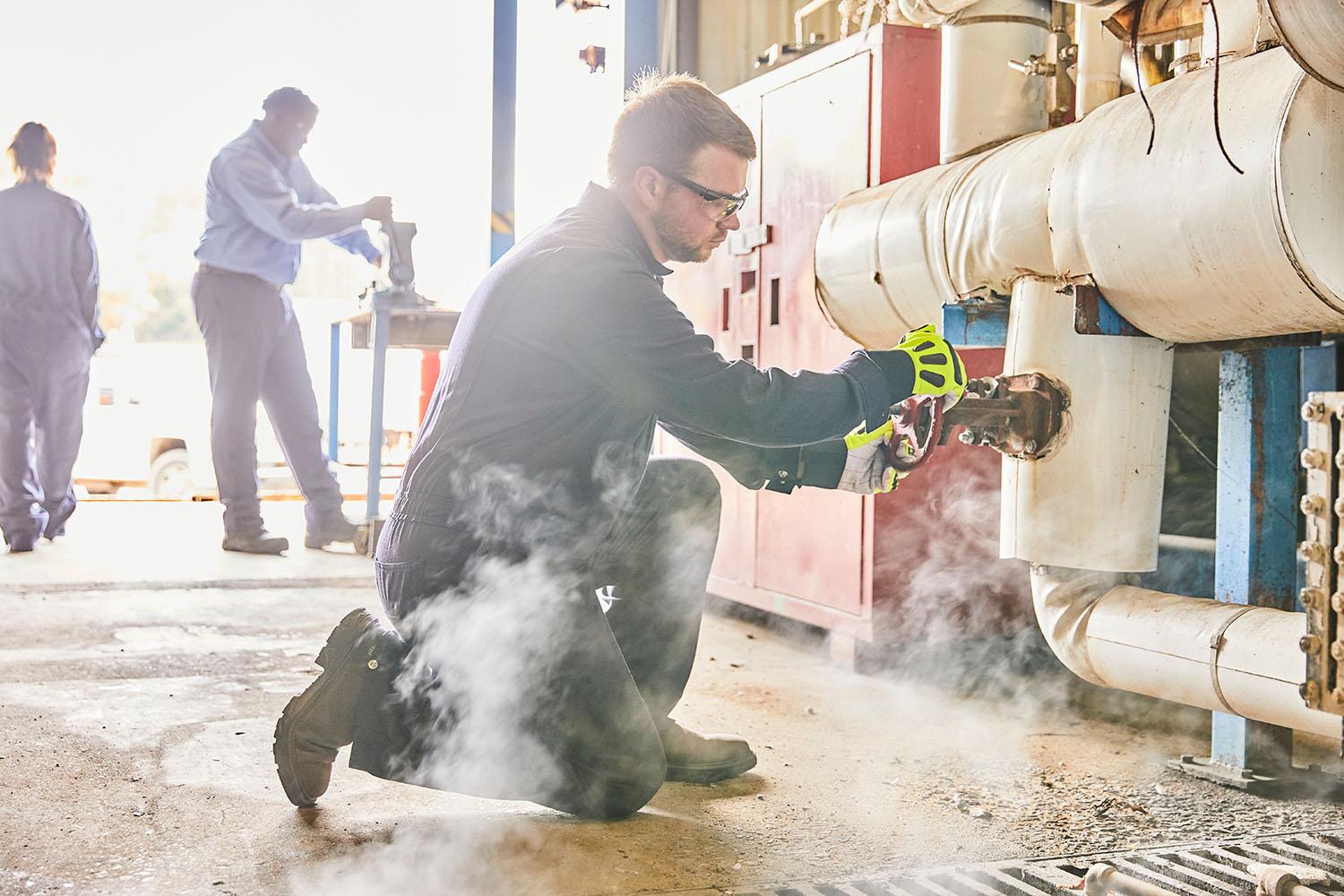
Hazards and Safety Standards
step 1 Identify your potential hazard.
Unique hazards have vastly different characteristics. That’s why test results for each hazard do not directly correlate to one another — nor do they correlate to performance in the field. The results from flash fire testing should not be substituted for electric arc flash testing when evaluating products. Be wary of fiber and/or fabric producers that attempt to draw comparisons between these two hazards.
step 2 Identify industry consensus standards for the exposure.
Different industry standards have been developed for electric arc flash and flash fire testing. For electric arc flash, ASTM has developed F1959, which produces an arc rating. NFPA 2112 was created for employees that work in environments where a potential flash fire hazard exists.
step 3 Ensure testing is conducted at independent labs.
Taking this step will help ensure that unbiased and scientifically valid data is being produced. Companies with vested interest in the FR business may conduct helpful and interesting tests. Ultimately, though, there is no substitute for information generated at an independent laboratory.

Hazards
Before forming a resilience strategy through FR/AR PPE, it is important to have a thorough understanding of what hazards you're up against. By identifying the likelihood and severity of all relevant hazards on the job, teams can better focus their safety approach and determine which protective fabric can be the life-saving difference.

Arc Flash
The intense energy and very short duration of an electric arc represents a very unique exposure — one that requires...

Flash Fire
Flash fires have a heat flux of approximately 84kW/m2 and typically last less than three seconds. Wearing flash fire flame-resistant clothing that...

Combustible Dust
The primary consensus standard (NFPA 652), the key NFPA standard governing PPE use in combustible dust environments, states employers “shall...

Inadvertent Chemical Splash
Workers in labs face dangerous liquid chemicals and/or solvents at atmospheric pressures, such as corrosive liquids, toxic liquids and absorption...

Molten Metals & Welding
For over 40 years, heavyweight flame-resistant cotton fabrics have been utilized by the steel industry for secondary protective clothing for...

Low Visibility
Construction, utility, police, emergency medical services, fire fighters and other workers are routinely exposed to the hazards of low visibility...

Standards
Exceeding industry standards is essential to our global commitment to delivering superior flame-resistant and arc-rated (FR/AR) protective fabrics. Around the world, Westex goes above and beyond requirements for unplanned exposure to hazards. This overview is not intended to replace those standards but rather serve as brief descriptions. We encourage you to view the full standards on the respective organization’s website.

NFPA® 2112
NFPA® 2112 is essential for manufacturers and certifying agencies, this standard protects workers from flash fire exposure and injury by...

NFPA 70E®
NFPA 70E® states requirements for safe work practices to protect personnel by reducing exposure to major electrical hazards. Originally developed...

ANSI 107
ANSI 107 provides a uniform, authoritative guide for the design, performance specifications, and use of high-visibility and reflective apparel including...

CGSB 155.20
CGSB 155.20 a national standard of Canada states the minimum requirements and test methods for performance of protective workwear worn...

CSA Z96
CSA Z96 Defines requirements for occupational apparel that is: a) capable of signaling the users presence visually; and b) intended...

EN ISO 11611:2015
ISO 11611:2015 specifies minimum basic safety requirements and test methods for protective clothing including hoods, aprons, sleeves, and gaiters that...

EN 1149-5
EN 1149-5 specifies material and design requirements for electrostatic dissipative protective clothing, including hoods and caps, used as part of...

IEC 61482-2
IEC 61482-1-2:2014 specifies procedures to test material and garments intended for use in heat and flame-resistant clothing for workers if...

ISO 20471
ISO 20471:2013 specifies requirements for high visibility clothing which is capable of visually signaling the user’s presence. The high visibility...

EN 13034
The EN ISO 13034 standard specifies the requirements for protective clothing against splashes of chemical products. Requirements for features related...

GB 12014
GB 12014 specifies the technical requirements, test methods, inspection rules, identification, etc. of static protective clothing. This standard applies to...

GB 8965.1-2009
GB 8965.1-2009 specifies the technical requirements, inspection (test) methods, inspection rules, marks, packaging and storage for flame-retardant protective clothing. This...

AS/NZS 4399:2017
AS/NZS 4399:2017 is the joint Australian and New Zealand standard for Ultraviolet Protection Factor (UPF). UPF 50+ is classified by...

AS/NZS 1906.4
AS/NZS 1906.4 is the joint Australian and New Zealand standard covering the materials used in high visibility safety garments.

AS/NZS 4824
AS/NZS 4824 is the joint Australian and New Zealand standard that contains the requirements and test methods for protective clothing...

NESC
The NESC is revised every 5 years with the purpose of providing formal standards, safety-oriented work practices and practical guidance...

CAN/ULC-s801-14
CAN/ULC-s801-14 applies to the construction, operation, maintenance and replacement of electric utility systems that are used to generate, transform, transmit,...

EN ISO 11612:2015
ISO 11612:2015 specifies performance requirements for protective clothing made from flexible materials, which are designed to protect the wearer’s body,...